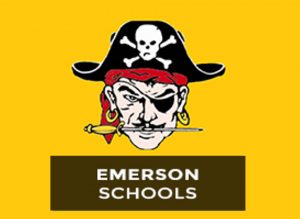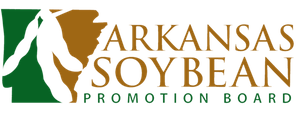Shelby Rayborn – 2017 Soybean Science Challenge Award Winner Southwest Arkansas Regional Science Fair
 Shelby Rayborn, 17, a junior at Emerson High School won the regional round of the Soybean Science Challenge at the 2017 Southwest Arkansas Regional Science Fair held at Southern Arkansas University in Magnolia on March 17. Rayborn’s victory was the third for Emerson High in the Soybean Science Challenge.
Shelby Rayborn, 17, a junior at Emerson High School won the regional round of the Soybean Science Challenge at the 2017 Southwest Arkansas Regional Science Fair held at Southern Arkansas University in Magnolia on March 17. Rayborn’s victory was the third for Emerson High in the Soybean Science Challenge.
Rayborn received a $300 cash award provided by the Arkansas Soybean Promotion Board. Her science project “The Most Beneficial Component of Fertilizers” was conducted to compare the benefits of the elements in fertilizers to soybeans. Her project also won second place in the Biological Sciences Division at the regionals level and third place in Emerson’s local science fair.
Connie Orsak, Rayborn’s science teacher, also won the Soybean Science Challenge Teacher Mentor Award. “Any teacher award is truly an honor accepted with the knowledge that one’s student really earned it. I’m very glad we had the structure of this challenge to direct our thinking toward an Arkansas-emphasis idea.”
“Learning that poultry and livestock and other animals consume about 98% of U.S. soybean meal proves just how important soybeans are to America as a whole,” said Rayborn. “Not only do soybeans provide food for our livestock and poultry, they provide many other necessities such as fuel.”
Rayborn said becoming the Southwest Arkansas regional winner of the Soybean Science Challenge definitely boosted her confidence in researching topics about which she knew very little. Some of her soybeans died for no known reasons. “I just knew I had to replant and try again and find out just how much water, light and heat was needed to keep the soybeans thriving.”
Rayborn knew very little about soybeans before she started the project; however her teacher, Connie Orsak, grew up in the fields of Arkansas County. “Soybeans, rice, cotton, and sweet potatoes were close friends.”
Orsak said that Rayborn learned about plant nutrients in her biology class in Rayborn’s sophomore year. “Shelby’s interest was piqued, even before we approached this material in A. P. Environmental Science.” Rayborn decided how she would set up the research and apply the fertilizer after consulting with the agriculture teacher, Orsak, and researching the topic on her own.
Rayborn’s mother, Liz Rayborn, said she couldn’t be more proud of this accomplishment. “Shelby worked very hard on this project. I was extremely happy to see all of her hard work pay off.”
Rayborn’s mother said Shelby is also involved in animal sciences through the Future Farmers of America Club at her school. “Science, especially medical sciences, has always been a favorite of Shelby’s.”
The most important conclusion of Rayborn’s research was that the sample with no fertilizer added produced the greatest soybean biomass compared to the samples with added fertilizer used in this experiment. “Knowing this, farmers could save money and soil pollution could decrease.”
Orsak said Rayborn’s independent study helped her self-confidence and her problem- solving skills. Rayborn asked Orsak’s opinion when she ran into obstacles with the research, and then made her own decisions about how to follow through. “Shelby’s skill in scientific methodology and reasoning grew with her increasing confidence,” said Orsak.
“The Soybean Science Challenge allows Arkansas senior-high students to participate in scientific discovery that can make a difference to our state and the world. Soybean farmers help feed the world, and Soybean Science Challenge students not only learn about this important commodity crop, they also develop an understanding of the challenges and complexity of modern farming,” said Dr. Karen Ballard, Extension developer and director of the program.
“The goal of the Arkansas Soybean Science Challenge is to engage students in “real world” education to support soybean production and agricultural sustainability,” said Gary Sitzer, chairman of the Arkansas Soybean Promotion Board. “The program also rewards scientific inquiry and discovery that supports the Arkansas soybean industry.”
The Arkansas Soybean Science Challenge was launched in January 2014 to 9-12 grade science students. Students who successfully completed the online course were eligible to have their original soybean-related research projects judged at the 2017 ISEF affiliated Arkansas science and engineering fairs.
Information on the 2017-18 Arkansas Soybean Science Challenge will be available in summer 2017. For more information, contact Dr. Karen Ballard at kballard@uaex.edu.
Shelby Rayborn – Completed Challenge 2016-2017, Emerson High School – Teacher, Connie Orsak
Category: Biological Science
Project Title: The Most Beneficial Component of Fertilizers
Abstract:
This experiment was conducted to compare the benefits of the elements in fertilizers to soybeans. Nitrogen, phosphorus, and potassium are the three main elements in all fertilizers. Which is most beneficial? Nitrogen would produce the greatest biomass for soybeans (soils with 14-14-14 or 21-0-0 added). Conventional soybeans were used and 6 were planted in each set of soil. The sets included: soil with no fertilizer, soil with 14-14-14 added, soil with 21-0-0 added, soil with 0-18-0 added, and soil with 0-0-60 added. This was completed two times. Trial one was exposed to temperatures around 30 degrees Fahrenheit declining their health, but it did support the hypothesis with the soil with 14-14-14 added and the soil with 21-0-0 accumulating the most biomass at 0.4 grams for 21-0-0 and 0.3 grams for 14-14-14. Trial two was them moved away from the door and the results were not supportive of the hypothesis. No fertilizer attained 0.9 grams of biomass, whereas 14-14-14 and 21-0-0 were only 0.7 grams.
